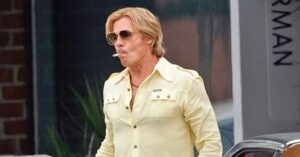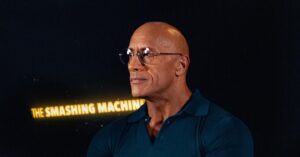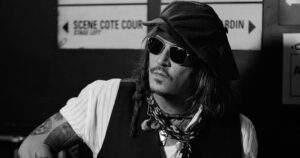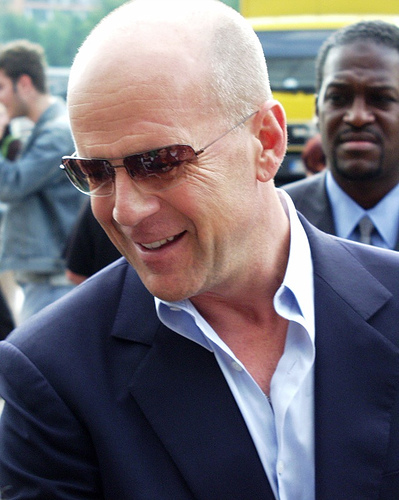
A Fresh Look at Bruce Willis: The Action Icon Who Redefined Hollywood
Bruce Willis is more than a movie star.
He is a cultural landmark who reshaped the meaning of action hero in modern cinema.
From his breakout smirk in “Moonlighting” to the blood-streaked grit of “Die Hard,” Willis built a career on charm, resilience, and a sly sense of humor that felt both grounded and larger-than-life.
His journey spans decades, genres, and global box office waves, leaving a vivid trail of characters who made audiences laugh, gasp, and think.
This is a deep dive into the rise, reinvention, and lasting impact of Bruce Willis—told in a way that is engaging, accessible, and built to inform and entertain.
Explore his filmography highlights.
Learn more about action cinema’s evolution.
Early Years: From Blue-Collar Roots to Blue Spotlight
Bruce Willis was born in 1955 in Idar-Oberstein, West Germany, to a military family.
He later moved to New Jersey, where he grew up in a working-class environment that shaped his style and swagger.
He struggled with a stutter as a child, which softened on stage and set him on a path toward acting.
He worked odd jobs, played harmonica, and hustled through theater and bartending before landing on television.
His early grind gave him an everyman presence—a quality that made him relatable even as he became a superstar.
Read about stage acting and performance craft.
Moonlighting: The Spark of a Star
In the mid-1980s, “Moonlighting” introduced Willis to millions as the fast-talking, wisecracking detective David Addison.
The chemistry with Cybill Shepherd was electric, and the show’s witty, meta style gave Willis room to play.
He became the unexpected romantic lead, a comedian with timing, spontaneity, and a sly grin.
This was not a polished matinee idol—it was a street-smart, quick-witted presence that felt modern.
The role won him awards and made Hollywood reconsider what a leading man could look like.
Discover the history of TV comedy-drama.
Die Hard: The Blueprint of the Modern Action Hero
When “Die Hard” arrived in 1988, it changed the action game.
Willis played John McClane, a New York cop trapped in a Los Angeles skyscraper during a hostage crisis.
He was barefoot, bruised, vulnerable, and irresistible.
Unlike invincible action titans of the era, McClane got hurt, joked through the pain, and used street smarts to survive.
It was the perfect blend of heart and spectacle.
McClane’s catchphrases and grit turned him into an instant icon.
“Die Hard” also rewrote Hollywood’s playbook for high-stakes thrillers: claustrophobic setting, escalating tension, and a flawed hero audiences could root for.
It inspired countless imitators—“Die Hard on a bus,” “Die Hard on a plane,” and so on.
Willis didn’t just star in a blockbuster—he shaped a genre’s DNA.
See how action film tropes evolved.
Visit the Nakatomi Plaza filming location history.
The 1990s: Chameleon Years of Risk and Reinvention
The 1990s showed Willis as a genre shapeshifter.
He alternated between high-octane thrillers and bold, cerebral roles.
“Pulp Fiction” (1994) cast him as a stoic, morally complex boxer, giving his career a stylish jolt.
“12 Monkeys” (1995) pushed him into dystopian psychology, working with director Terry Gilliam on a haunting, time-bending tale.
“The Fifth Element” (1997) blended sci-fi flamboyance with his dry humor and tough tenderness.
He could be stoic, sentimental, or subversive—sometimes all in one film.
Willis had a rare ability to turn a single glance into a story beat.
He trusted silence and physical performance as much as dialogue.
That mix kept his characters grounded even in wild, speculative worlds.
Explore Quentin Tarantino’s impact on cinema.
Read about science fiction’s visual style.
M. Night Shyamalan and the Power of Stillness
“The Sixth Sense” (1999) revealed a quieter, haunting side of Willis.
He played Dr. Malcolm Crowe with calm patience and deep empathy.
His restraint made the film’s twist land with seismic force.
Audiences remembered the shock, but it was Willis’s steady presence that made the story believable.
He re-teamed with Shyamalan for “Unbreakable” (2000), creating a subdued, intimate take on comic-book myth.
As David Dunn, he carried emotional weight without grand speeches or flashy heroics.
These collaborations showed how stillness can be cinematic dynamite.
Willis proved he could do big spectacle or whispered melancholy—and still be unmistakably himself.
Learn about the craft of film acting.
Comic-book film history in context.
The 2000s: Franchise Firepower and Global Appeal
In the 2000s, Willis balanced prestige with popcorn.
He returned to John McClane in sequels that expanded the franchise’s explosive scale.
He brought swagger and warmth to ensemble epics like “Sin City” (2005), where he played a battered cop with a noble heart.
He leaned into humor with “RED” (2010), mixing action with late-career wit.
By this point, the “Bruce Willis presence” was itself a brand—wry, tough, and cool under pressure.
Audiences worldwide trusted that brand.
Distributors did, too.
His name above the title reassured viewers they were in for a ride.
In a globalized box office, that kind of reliability is gold.
How global box office shapes film choices.
The Indie Edge: Surprises Off the Beaten Path
Willis sometimes sidestepped the blockbuster lane to take indie detours.
He appeared in films that were smaller in budget but rich in personality.
These choices hinted at a performer curious about tone, texture, and surprise.
Even when the films didn’t break records, they built texture into his résumé.
His willingness to show up for unusual roles kept critics watching.
It also reminded audiences that stars can still take risks and play.
What makes an indie film “indie”.
The Bruce Willis Persona: Humor, Humanity, and Heat
Why did Bruce Willis resonate so strongly for so long?
Part of the answer is humor.
He could land a joke without winking too hard.
He let the comedy come from character, not just punchlines.
Another part is humanity.
He played men with jobs, marriages, mistakes, and stubborn hope.
He might be a cop, a hitman, or a drifter—but he was always human first.
That grounded feeling made the spectacle feel earned.
Finally, he brought heat.
There’s a low-boil intensity in his best roles—an inward pressure that bursts at the right moment.
He knew exactly when to hold back and when to let loose.
That sense of timing made him both thrilling and trustworthy.
Look into character-driven acting styles.
Action Design: The Body Language of a Bruce Willis Set Piece
Willis shaped action not just with lines, but with movement.
He moved like someone trained by life, not by a stunt team.
He ran like he needed to get somewhere, not like he needed to look cool.
His fights felt scrappy, desperate, and improvised.
He looked heavy when tired and light when inspired—a rare realism in glossy action cinema.
This physical honesty helped redefine “movie toughness.”
You didn’t need invincibility to be a hero.
You needed grit, humor, and the courage to keep going.
Stunt work and choreography explained.
Collaborations That Mattered
Great careers are built on great collaborators.
Willis worked with visionary directors who knew how to harness his energy.
John McTiernan sharpened the tension and texture of “Die Hard.”
Quentin Tarantino unlocked his brooding cool in “Pulp Fiction.”
Luc Besson and Milla Jovovich helped him play tender in a wild sci-fi opera.
M. Night Shyamalan slowed everything down to amplify meaning.
He also held the screen with strong co-stars.
Samuel L. Jackson brought crackling chemistry in “Unbreakable” and “Die Hard with a Vengeance.”
Bonnie Bedelia grounded McClane’s world with warmth and grit.
Uma Thurman and Ving Rhames added noir gravitas in “Pulp Fiction.”
Each partnership revealed a different facet of what Willis could do.
Learn how directors shape performance.
The Sound of Bruce Willis: Music, Voice, and Vibe
Beyond acting, Willis dabbled in music with bluesy gusto.
He released albums and performed harmonica, showing a playful side that fans loved.
His speaking voice—husky, steady, slightly amused—became part of his signature.
He could deliver a line like a rhythm, with beats and breath that told its own story.
Voice matters in cinema.
It draws audiences in and sets tone before the action even starts.
Willis understood that, and it became part of his screen gravity.
Why voice matters in performance.
Pop Culture Footprint: From Quotes to Christmas Debates
Bruce Willis’s characters gave pop culture a library of quotes and memes.
Fans still debate whether “Die Hard” is a Christmas movie.
His catchphrases have lived on T-shirts, GIFs, and late-night jokes.
He is one of the few stars whose persona became a reference point in itself.
You can say “a Bruce Willis type” and people know what you mean.
It signals dry humor, high stakes, and a refusal to quit.
That shorthand is cultural power.
Pop culture and fandom dynamics.
The Late Career: Legacy, Choices, and Reflection
In later years, Willis continued to work steadily across genres and budgets.
He alternated between leading roles and strategic cameos.
Even when projects varied in critical response, his star presence remained valuable.
Audiences still watched for the glint in his eye and the way he could shift a scene with a single line.
His body of work now reads like a map of modern action cinema.
Follow it, and you see how the industry moved—from practical stunts to CGI storms, from tight thrillers to global franchises.
Willis rode these waves while staying unmistakably himself.
Industry trends and movie economics.
Influence on the Next Generation
You can trace Willis’s influence in today’s action leads.
Actors lean into vulnerability and humor as much as muscle.
Heroes bleed, panic, and make mistakes—and we love them more for it.
That shift owes a lot to John McClane and the man who gave him life.
From streaming series to superhero sagas, you can spot the blueprint.
The wisecracking survivor.
The reluctant protector.
The broken man who still does the right thing.
These archetypes echo the Willis way.
Modern action archetypes explained.
What Makes a Bruce Willis Film “Work”
A great Bruce Willis film usually shares a few elements.
First, stakes are personal.
He is fighting for family, survival, or moral clarity—not just for explosions.
Second, the setting pushes back.
The environment—skyscraper, city, spaceship—becomes a character.
Third, humor lives in the cracks.
Even in danger, a wry line pops the tension and deepens our bond with the hero.
Add a smart villain and a director who trusts quiet moments, and you have the recipe.
It’s not just action—it’s empathy under pressure.
Story structure basics for thrillers.
Lessons for Filmmakers and Fans
There are practical takeaways in Willis’s career.
For actors: find the moments of truth between the explosions.
For writers: give your hero a human problem before the big one.
For directors: let the camera linger on the face that’s thinking, not just the fist that’s flying.
For fans: remember that charisma is not noise—it is attention, timing, and care.
Willis turned small choices into big emotions.
That is a skill worth studying across arts and industries.
Acting resources and training.
The Timeless Appeal of Imperfect Heroes
Perfect heroes are shiny but forgettable.
Imperfect heroes stick.
Bruce Willis built a gallery of imperfect heroes who grew under pressure.
They loved, failed, laughed, and kept going.
That is why his movies are rewatchable—they feel like a conversation with courage.
When the glass breaks and the stakes climb, you want someone who feels real.
Willis gave us that again and again.
It is a gift that keeps echoing through screens everywhere.
Where to Start: A Curated Watchlist
If you’re new to Bruce Willis, start here for a balanced tour.
Die Hard (1988) for the classic action template.
Pulp Fiction (1994) for the cool, noir-infused turn.
12 Monkeys (1995) for brainy sci-fi with heart.
The Fifth Element (1997) for colorful, bold worldbuilding.
The Sixth Sense (1999) for quiet power and emotional depth.
Unbreakable (2000) for introspective heroism.
Sin City (2005) for graphic-novel grit and visual style.
RED (2010) for breezy, charming ensemble action.
Each title shows a different facet of his range.
Together, they explain the legend.
Browse streaming availability.
Cultural Longevity: Why We Still Care
We keep returning to Bruce Willis because he made toughness feel tender.
He let vulnerability live in the same room as victory.
He showed that courage is not absence of fear but action in spite of it.
In a noisy age of spectacle, that message rings true.
Great movie stars leave more than posters and quotes.
They leave a way of feeling.
Willis’s way remains alive every time the lights dim and the first shot lands.
Film appreciation tips for viewers.
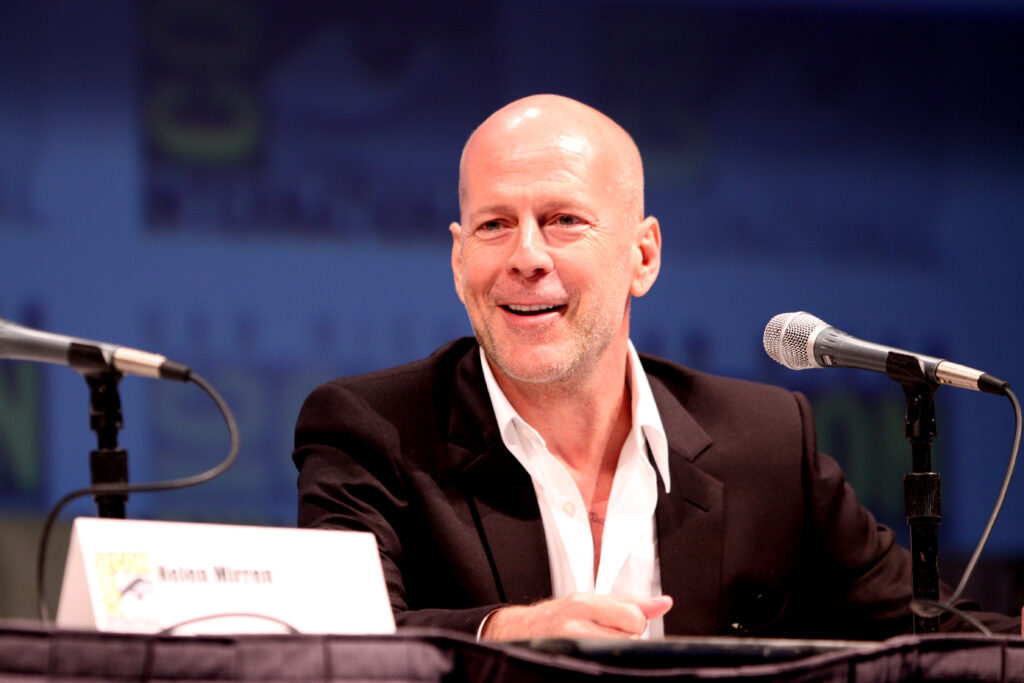
Also Read: Discovery took center stage at the inaugural Sound And Gravity festival

